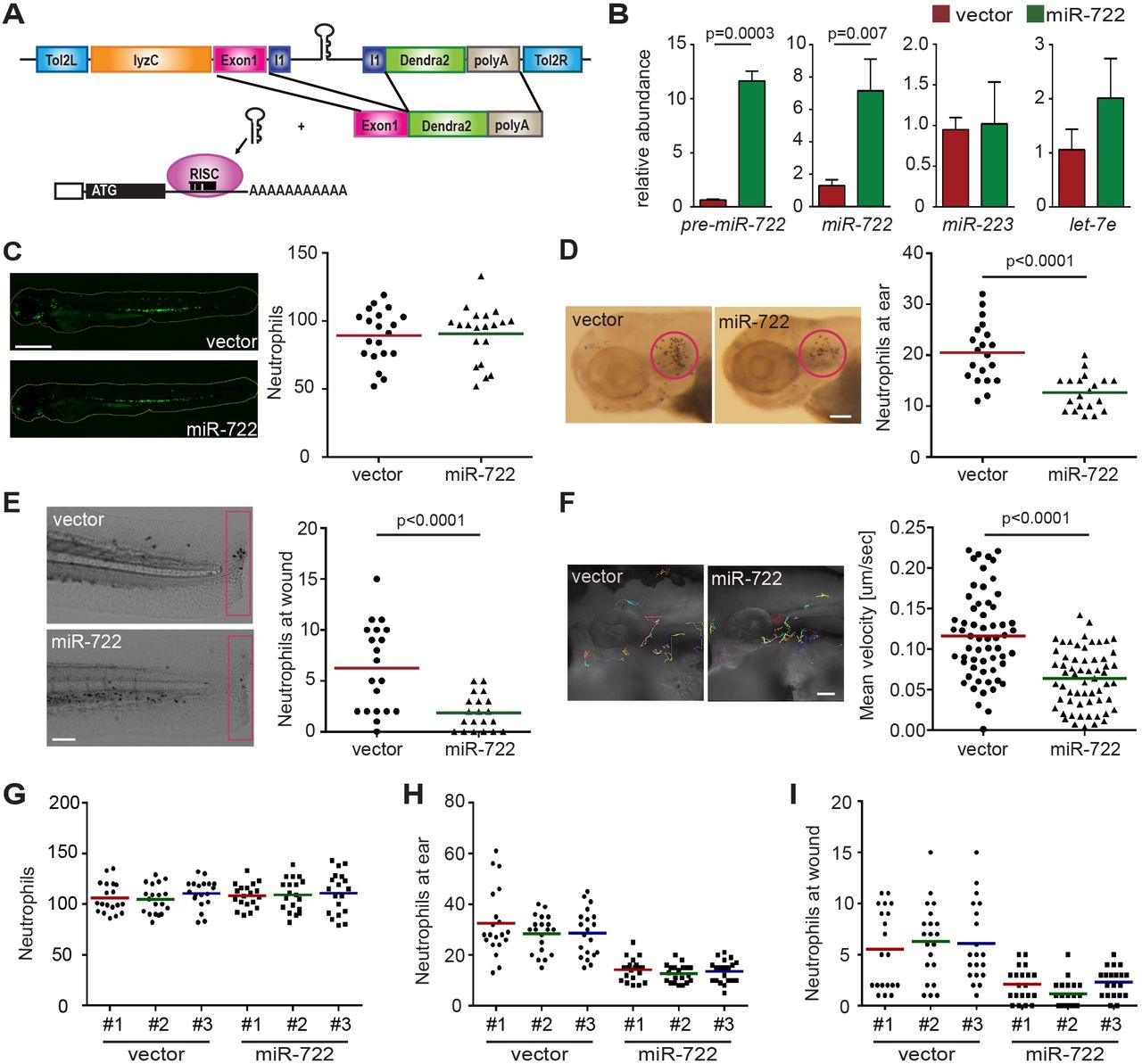Fig. 1
Neutrophil recruitment and motility is hindered in the miR-722-overexpressing zebrafish line. (A) A schematic of the Tol2-lyzC:miR-722/Dendra2 plasmid, injected into wild-type AB zebrafish embryos to generate the transgenic line Tg(lyzC:miR-722/Dendra2)pu6 (miR-722). Tg(lyzC:Dendra2)pu7 was generated using the same configuration without the miR-722 insertion (vector). All experiments were performed with F2 larvae at 3 dpf. (B) Relative expression level of precursor and mature miR-722, miR-223 and let-7e (normalized to U6 expression) in vector and miR-722 lines determined by RT-qPCR. Data are means±s.d. (N=3 biological repeats with 10 larvae at each time point in each group). P values were calculated with unpaired Student's t-test. (C) Representative images and quantification of total neutrophils in vector and miR-722 lines. One representative result of three independent experiments is shown (n=20). Scale bar: 500 µm. (D) Representative images and quantification of neutrophil recruitment to localized ear infection in vector or miR-722 larvae at 1 hpi. The infected ear is indicated with the circle. One representative result of three independent experiments is shown (n=20). P value was calculated with unpaired Student's t-test. Scale bar: 100 µm. (E) Representative images and quantification of neutrophil recruitment to tail transection site in vector or miR-722 larvae at 1 h post-injury. Neutrophils in the boxed region were quantified. One representative result of three independent experiments is shown (n=20). P value was calculated with unpaired Student's t-test. Scale bar: 100 µm. (F) Tracks and quantification of neutrophil motility in vector or miR-722 larvae. Results were pooled from three independent larvae (n=60). P value was calculated with unpaired Student's t-test. Scale bar: 50 µm. (G-I) Quantification of total number of neutrophils (G), neutrophils recruited to the ear 1 h post P. aeruginosa infection (H) and to the wound 1 h post tail transection (I). One representative result of three independent experiments is shown (n=20). No statistical difference among the results from separate founders were observed with unpaired one-way ANOVA.

